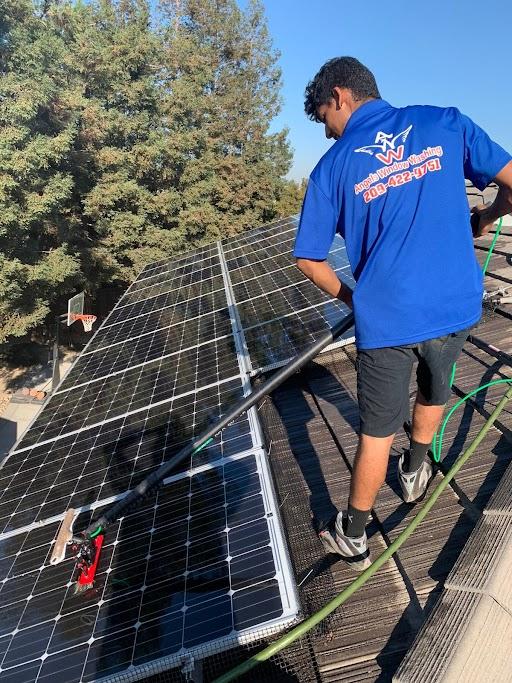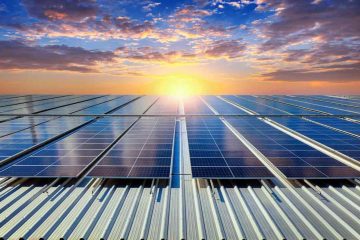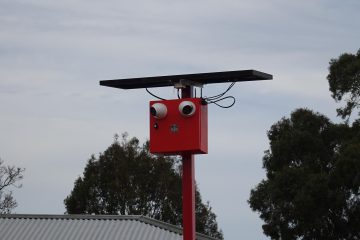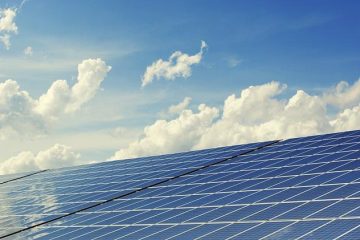Table of Contents
- Understanding the Factors Influencing Solar Panel Costs
- Breaking Down the Initial Investment for Solar Energy
- Long-Term Savings: The Financial Benefits of Solar Panels
- Exploring Incentives and Tax Credits for Solar Installations
- Evaluating the Return on Investment in Solar Energy Solutions
- Q&A
- In Summary


Understanding the Factors Influencing Solar Panel Costs
When assessing the costs associated with solar panels, various factors come into play that can significantly influence the final price. Quality of Materials is essential; solar panels come in different efficiencies, types, and warranties. Higher efficiency panels, which convert more sunlight into electricity, typically cost more upfront but can yield greater savings over time. The brand reputation also affects cost, as established brands may price their products higher due to reliability and performance guarantees.
Installation Costs are another crucial component of the overall expenditure. The complexity of the installation can vary depending on your roof type, the orientation of your home, and local regulations. Working with a licensed installer not only ensures compliance with safety standards but may also come with a premium. It’s advisable to obtain multiple quotes to gauge the market rate and consider additional expenses such as permits and inspections, which can add to the initial budget.
incentives and rebates can play a role in mitigating costs. Many governments and municipalities offer tax credits or rebates to encourage solar adoption. Depending on your location, these incentives can significantly reduce the net cost of installation, making solar energy a more accessible option. It’s crucial to explore your eligibility for such programs, as they vary widely by region and can impact the overall investment in solar technology.
| Factor | Impact on Cost |
|---|---|
| Quality of Materials | Higher prices for more efficient panels |
| Installation Complexity | Varies cost based on roof type and location |
| Incentives and Rebates | Can reduce overall financial burden |


Breaking Down the Initial Investment for Solar Energy
When considering a transition to solar energy, knowing the initial investment can be a pivotal factor. Solar panel costs can vary widely based on several factors which include the size of the installation, the type and quality of equipment, and local installation labor costs. On average, a typical residential solar panel system might cost between $15,000 to $30,000 before any incentives or tax credits. Understanding these components can aid homeowners in making an informed decision and budgeting appropriately.
Key expenses involved in the solar installation process encompass:
- Equipment Costs: This includes solar panels, inverters, and mounting hardware. High-efficiency panels may incur a higher initial cost but offer greater long-term savings.
- Installation Fees: Labor costs can vary based on the complexity of the installation and local market rates. Choosing an experienced installer can result in a more efficient integration.
- Permitting and Inspection Fees: Local regulations may require permits, which can add to the overall cost. Ensuring compliance through inspections is also essential.
To provide a clearer picture, here’s a concise breakdown of the typical costs associated with solar panel installation:
| Cost Component | Estimated Cost |
|---|---|
| Solar Panels (10 kW system) | $8,000 – $12,000 |
| Inverter | $1,500 – $3,000 |
| Installation Labor | $2,000 – $5,000 |
| Permits and Inspections | $500 - $1,500 |
Long-Term Savings: The Financial Benefits of Solar Panels
Investing in solar panels is not just about the initial installation cost; it represents a significant long-term financial advantage for homeowners and businesses alike. Over time, the savings on energy bills can amount to thousands of dollars, depending on factors like energy consumption, local utility rates, and solar incentives. By generating your own electricity, you minimize your reliance on the grid, allowing you to retain more of your income rather than channeling it into ever-increasing energy costs.
Additionally, solar panels can add value to your property. Studies have shown that homes equipped with solar energy systems sell for more than those without. A solar power system is an attractive feature for environmentally conscious buyers looking for energy-efficient homes. Depending on your region, the increase in property value can offset the initial costs of installation significantly, making it a wise investment not only for savings but for your property’s marketability.
Moreover, many governments offer financial incentives that can amplify your savings. These incentives may include tax credits, rebates, and grants that can reduce the upfront cost of solar panel installation. Additionally, many areas have net metering policies, which allow you to earn credits for the surplus energy your system generates. This approach not only enhances your savings but also helps in promoting sustainability within your community. Understanding and leveraging these incentives can transform solar panel installation from a costly investment into a smart financial decision.


Exploring Incentives and Tax Credits for Solar Installations
When considering the financial aspects of solar panel installations, understanding the incentives and tax credits available can significantly influence your decision. These financial benefits not only reduce the upfront costs but also enhance the overall return on investment. For homeowners and businesses alike, federal and state programs offer a variety of incentives to support the adoption of renewable energy. This means paying less for installation while contributing to a cleaner environment.
Among the most prominent incentives is the Federal Investment Tax Credit (ITC), which currently allows for a deductibility of a significant percentage of the installation cost from federal taxes. Many states additionally provide their own credits or rebates, which can vary widely. To navigate these options effectively, it’s important to check specific eligibility requirements and deadlines. Here’s a brief overview of some popular incentives:
| Incentive Type | Description | Eligibility |
|---|---|---|
| Federal ITC | Deduction of installation costs from federal taxes | Homeowners and businesses, no cap on cost |
| State Tax Credits | Variable percentage deducted from state taxes | Depends on state regulations |
| Rebates | Cash incentives for installing solar systems | Varies by locality; often first-come, first-served |
In addition to tax credits, many areas offer solar renewable energy certificates (SRECs) that can be sold to utility companies, providing another source of income. By taking advantage of these various incentives, you can effectively lower your initial investment in solar technology and potentially earn money over time. Ultimately, the combination of these incentives can transform solar installation from a daunting expense into a smart financial decision with lasting benefits.


Evaluating the Return on Investment in Solar Energy Solutions
When considering an investment in solar energy solutions, it’s crucial to assess the financial benefits that can be realized over time. The initial costs associated with installing solar panels may seem daunting, but a deeper analysis reveals potential savings on energy bills and various incentives. Understanding local utility rates and how they fluctuate can assist homeowners in determining how quickly they can recoup their investments through decreased energy expenses.
Moreover, potential government incentives—such as tax credits, rebates, and other financial programs—can significantly alter the ROI landscape. By taking advantage of these incentives, homeowners can lower their upfront costs considerably, making solar energy more accessible. Common incentives include:
- Federal tax credits (such as the Investment Tax Credit)
- State rebates for renewable energy installations
- Net metering policies that allow homeowners to sell excess energy back to the grid
To further illustrate the potential return on investment, consider this simple breakdown comparing the annual costs and savings between traditional energy methods and solar energy systems:
| Item | Traditional Energy Costs | Solar Energy Costs |
|---|---|---|
| Initial Installation Cost | $0 | $15,000 |
| Annual Energy Bill | $1,200 | $200 |
| Tax Credits/Rebates | $0 | -$5,000 |
| Estimated Savings Over 20 Years | $24,000 | $16,000 |
With careful evaluation, it becomes evident that the long-term financial benefits of transitioning to solar energy can outweigh the initial investment, leading to significant cost savings and environmental advantages that last well beyond the lifespan of the solar panels.
Q&A
Q&A: Understanding Solar Panel Costs
Q1: What factors influence the cost of solar panels?A1: The cost of solar panels can depend on various factors, including the type and efficiency of the solar panels themselves, installation costs, system size, and local market conditions. Premium brands and high-efficiency panels typically come at a higher price but can offer better long-term savings. Installation costs can vary based on complexity, roof type, and labor rates in your area.Q2: How much do solar panels typically cost?A2: On average, residential solar panel systems can range from $15,000 to $25,000 before any tax credits or rebates. This can be adjusted depending on system size, energy needs, and the type of solar technology chosen. It’s important to get several quotes to understand the range and find the best deal.
Q3: Are there any financial incentives available to reduce solar panel costs?A3: Yes! Numerous financial incentives, such as federal tax credits, state rebates, and local green programs, can significantly reduce upfront costs. For instance, the federal solar tax credit allows homeowners to deduct a significant portion of the installation cost from their federal taxes, making solar energy more affordable.
Q4: What long-term savings can I expect from installing solar panels?A4: Many homeowners see substantial long-term savings on their energy bills after installing solar panels. Depending on your location and energy usage, you could save thousands over the lifespan of the system—often 20 to 30 years. Additionally, solar panels can increase your home’s value, further enhancing the financial benefits.
Q5: How do maintenance costs impact the overall expense of solar panels?A5: Solar panels are quite low-maintenance, which is one of their advantages. Most systems require minimal upkeep, with occasional cleaning and inspections. While it’s advisable to budget for occasional maintenance—typically costing a few hundred dollars over the years—the overall costs remain significantly lower compared to traditional energy sources.
Q6: What financing options are available for those who can’t afford to pay upfront?A6: If upfront costs are a barrier, many homeowners explore financing options such as solar loans, leases, or power purchase agreements (PPAs). These arrangements allow you to install solar panels with little to no upfront cost, paying instead through monthly installments or by purchasing the energy produced at a set rate.
Q7: Is it worth investing in solar panels for my home?A7: The decision to invest in solar panels largely depends on your energy needs, financial situation, and environmental goals. With increasing energy costs, many find that solar offers a viable way to lower bills and contribute to sustainability. Conducting a cost-benefit analysis specific to your situation is crucial before making a decision.
Q8: How do I determine the best solar panel system for my needs?A8: To find the best solar panel system, consider your energy consumption patterns, budget, and long-term goals. Consulting with a solar expert can provide insights into optimal system size and configurations tailored to your home’s unique characteristics. Additionally, comparing different brands and technologies can help you make an informed choice.
Q9: Will the cost of solar panels decrease in the future?A9: While it’s challenging to predict exact trends, solar panel costs have generally decreased over the past decade due to technological advancements and increased competition within the market. However, factors like tariffs or raw material prices can influence future pricing. Keeping an eye on these trends will help you stay informed on the best time to invest.—This Q&A aims to clarify common queries and concerns surrounding solar panel costs, helping you navigate decisions with confidence.




0 Comments